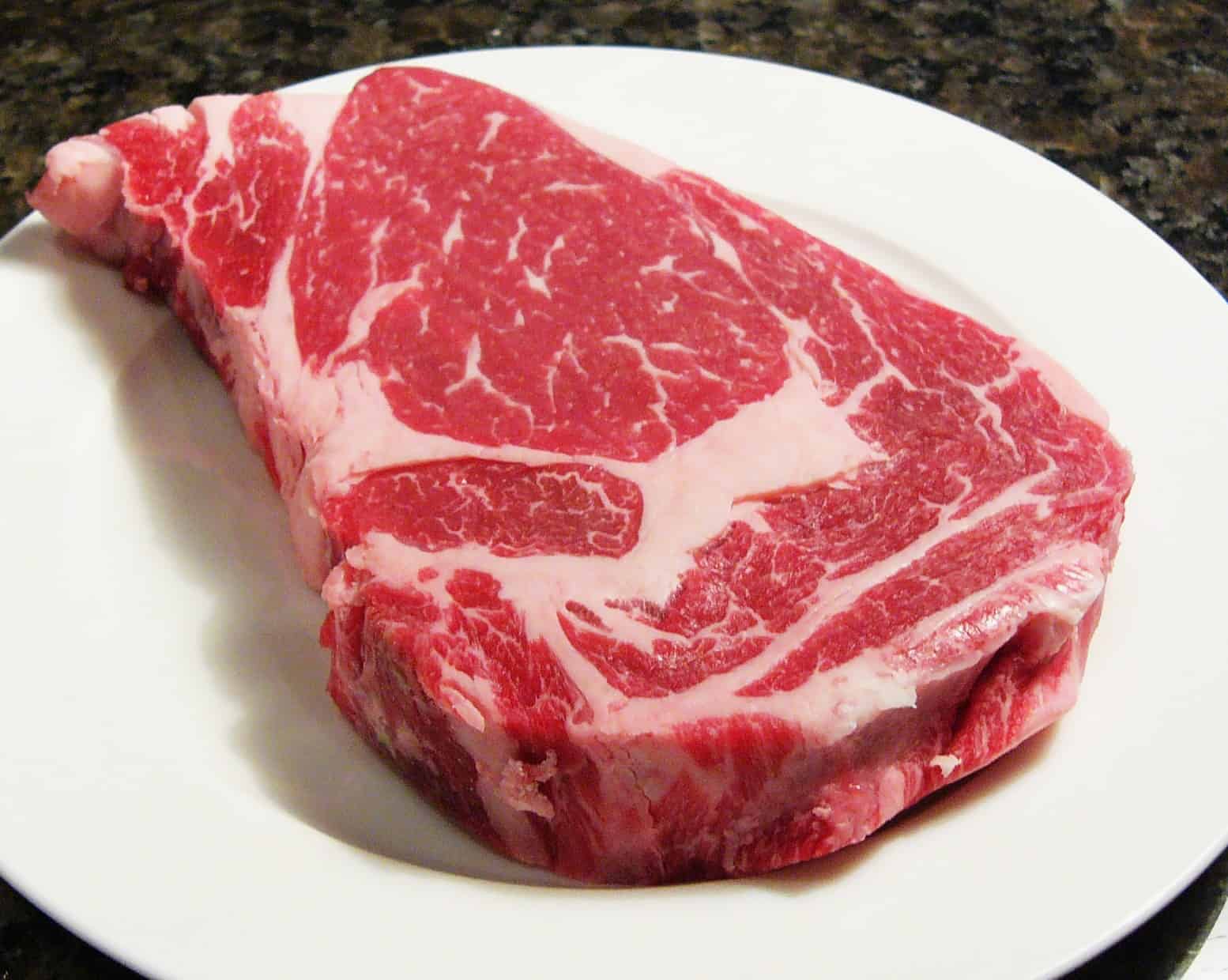
Despite the howls of derision that will probably arise from the lips of "expert" chefs, deliciously juicy steak can be made on a frying pan! Perfect for a cold day when using the grill is less than pleasurable, this delectable recipe will leave your guests clamoring for more.
Ingredients
- Steaks or chops, at least 1 in (2.5 cm) thick
- Salt, pepper
- Herbs (optional)
- Cooking oil (such as canola, vegetable, or brown nut oil)
- Butter
Steps

Choose a thick cut of steak over a thin one. Thick cuts of steak (1 in/2.5 cm or more) can develop a beautiful outer crust without drying out the insides unnecessarily. This task is a lot more difficult with thin cuts: You risk overcooking the inside right when the outside has finished browning. If you like your steak to have a perfectly-brown outside and a juicy, pink center, opt for thicker cuts of meat over thinner ones.
Salt your steaks in advance and let them come to room temperature before pan frying. Salt at least 40 minutes in advance of frying. Salting too soon before cooking does the exact opposite of what you want to do: It brings the moisture out to the surface. When you salt far enough in advance that process can reverse:
- The salt draws the moisture out to the surface, where it settles in small puddles. Meanwhile the salt is tenderizing the meat and breaking down proteins. After this quick tenderizing process happens, the moisture drawn out by the salt begins to seep back in to the steak. This leaves your steak both more tender and more moist.
- Do not apply pepper just yet. Pepper can burn during the pan frying, while salt cannot. If you don't want the acrid taste of pepper on your beautiful steak, hold off until just after you've finished frying the steak.

Oil the pan with 1 to 2 teaspoons of neutral oil (canola or brown nut works fine) over high heat. Wait until the oil just starts to smoke. This means that the pan is ready to take the steak.

Lightly place the steak in the pan and begin to fry. If the pan has raised ridges, you can set your steak in at an angle in order to give it a crosshatch pattern.

Decide whether you're going to flip the meat often or only once. To flip or not to flip — that is the question. While many cooks choose to flip the steak only once to develop full color on each side, many food scientists have recently begun to weigh in on the question, and their findings point to a different answer.
- The frequent flipping club has discovered that food that is flipped often cooks faster and more evenly. On the flip side, the meat doesn't have enough time to develop the best possible charring, although it still develops plenty of flavor.
- Try it out for yourself and see which method produces the best steak for you. Cooking is all about suiting your own preferences. Those preferences should speak loudest.
About 2 minutes before steak is ready, add 2 tablespoons of butter into the pan, along with any herbs or aromatics. The butter will give the steak a rich, nutty flavor. Tilt the pan slightly and spoon the melted butter on top of the steak for even coverage. If you want to add any herbs or aromatics to your steak — although a good steak will not need them — consider adding any one of the following:
- Rosemary
- Lavender
- Thyme
- Sage
- Garlic
 Use a thermometer to test doneness. A thermometer is your best bet for producing a great-tasting steak consistently each time. (Alternately, you can use the finger test.)
A handy electronic thermometer will only pierce the surface of the skin
lightly and should be able to tell you if your steak is nearing the
desired doneness. For a guide on what temperature you want to cook your
steak to, study the following chart:
Use a thermometer to test doneness. A thermometer is your best bet for producing a great-tasting steak consistently each time. (Alternately, you can use the finger test.)
A handy electronic thermometer will only pierce the surface of the skin
lightly and should be able to tell you if your steak is nearing the
desired doneness. For a guide on what temperature you want to cook your
steak to, study the following chart:
- 120° F (48.8° C) = Rare
- 130° F (54.4° C) = Medium rare
- 140° F (60° C) = Medium
- 150° F (65.5° C) = Medium well
- 160° F (71.1° C) = Well done
- If you don't let your steak rest properly, all the juices will spill out when you cut into it. That's because the muscle fibers tighten up during cooking, sending the juices to the center of the cut, where the meat is still relatively rare and light. Resting the meat allows the muscle fibers to relax, sending the juices back through the entire piece of meat. Then, when you cut it up, your steak is both more tender and more juicy.
 Serve your steak and enjoy. You can either cut your steak into relatively thick slices or let your guests tuck into it on their own.
Serve your steak and enjoy. You can either cut your steak into relatively thick slices or let your guests tuck into it on their own.
No comments:
Post a Comment